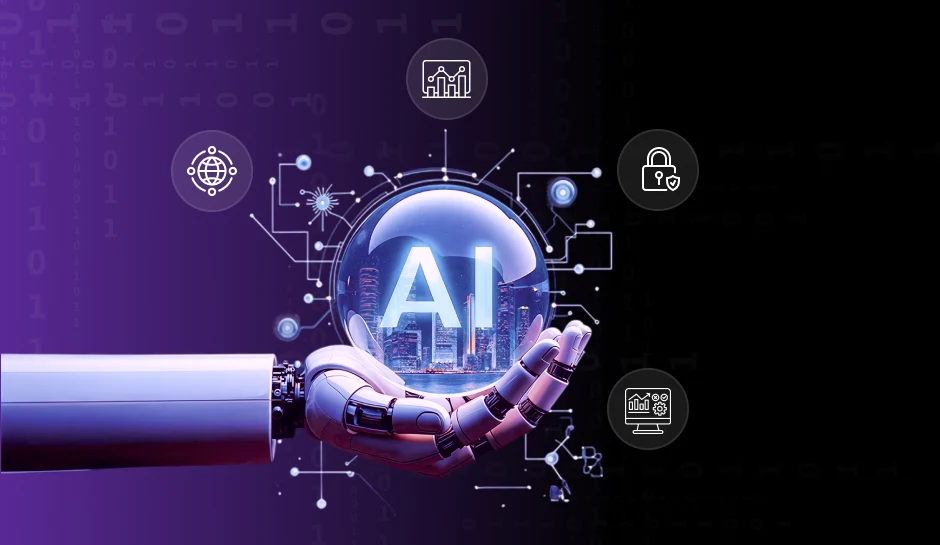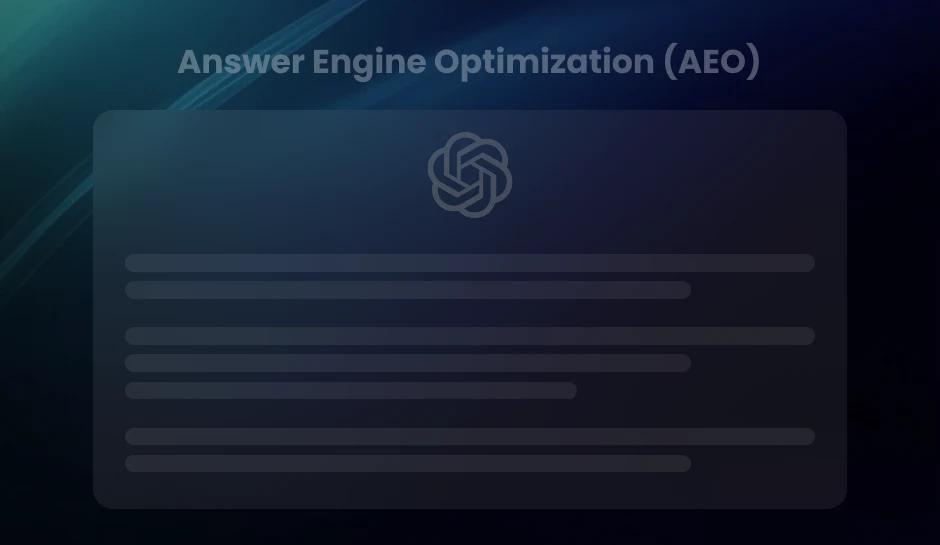
AI-Driven Marketing Insights: How Data-Powered Strategies Drive Business Success
AI-powered visual analytics revolutionizes data interpretation by transforming raw numbers into dynamic dashboards, heatmaps, and graphs. With machine learning, marketers uncover hidden patterns, detect anomalies in real-time, and forecast trends effortlessly. Optimize campaigns with AI-driven insights for smarter, faster decision-making.
AI marketing integrates machine learning, natural language processing, and predictive analytics to refine and automate marketing strategies. Businesses now use AI to analyze consumer behavior, personalize experiences, and optimize campaigns in real-time.
Traditional marketing relies on intuition, historical performance, and segmented demographics. AI replaces this approach with data-driven automation, uncovering behavioral patterns that human analysts might miss. Machine learning models predict customer intent, enhance content targeting, and adjust pricing dynamically.
Data serves as the foundation of AI-powered marketing. Algorithms process customer interactions, transaction histories, and engagement metrics to generate actionable insights. Without accurate and voluminous data, AI models lack precision. Companies leveraging AI-driven marketing insights benefit from increased efficiency, higher conversion rates, and improved customer retention.
Machine Learning Algorithms: The Backbone of AI Marketing
Key Machine Learning Algorithms in Marketing
Machine learning algorithms process vast datasets to uncover patterns, optimize campaigns, and predict customer behavior. Several types of algorithms power AI-driven marketing, each serving distinct functions:
- Supervised Learning: Algorithms like decision trees and support vector machines classify data based on labeled training samples, improving customer segmentation and targeted advertising.
- Unsupervised Learning: Clustering techniques such as k-means and hierarchical clustering identify hidden patterns in consumer data, helping marketers discover new audience segments.
- Reinforcement Learning: These algorithms optimize marketing strategies by learning from past actions, commonly used in dynamic pricing and automated advertising.
- Neural Networks: Advanced deep learning models process unstructured data from social media, emails, and website behavior to refine personalization and sentiment analysis.
Algorithm Applications in Campaign Management and Analytics
Machine learning streamlines campaign management by automating decision-making and improving efficiency. Marketers leverage algorithms in several ways:
- Ad Targeting: AI predicts which ads resonate most with different customer segments using historical engagement data.
- Real-Time Bidding (RTB): Reinforcement learning models assess bid values dynamically, ensuring maximum ad reach at optimal costs.
- Churn Prediction: Classification-based models identify customers likely to leave, enabling proactive retention strategies.
- Email Personalization: Natural language processing (NLP) analyzes audience preferences to craft subject lines and content that increase open rates.
Customizing Experiences with Predictive Behavioral Patterns
Predictive modeling transforms raw data into actionable insights. By analyzing browsing history, purchase behaviors, and social interactions, machine learning refines marketing personalization:
- Dynamic Content Customization: AI tailors website experiences by recommending products or articles based on user behavior.
- Customer Lifetime Value (CLV) Prediction: Algorithms forecast which customers will generate the highest revenue over time, prioritizing marketing efforts accordingly.
- Sentiment-Based Adjustments: AI assesses customer sentiments from reviews and social media to adjust messaging and product offerings in real-time.
Machine learning drives efficiency in AI marketing by processing complex datasets, identifying patterns, and predicting future actions. These algorithms automate decisions, refine customer engagement, and enhance marketing ROI.
Pro Tip- Leverage machine learning algorithms to automate decision-making and enhance personalization. Use predictive analytics to anticipate customer needs, optimize ad targeting, and improve retention strategies—boosting marketing efficiency and ROI.
Customer Journey Analytics: Mapping the Path to Purchase
Understanding Customer Journey Analytics
Customer journey analytics tracks and analyzes every interaction a user has with a brand, from initial awareness to final conversion. AI processes large-scale behavioral data, connecting fragmented touchpoints into a unified path. This level of analysis reveals where users drop off, where they engage most, and what influences their decisions.
The Role of AI in Identifying Critical Touchpoints
AI detects patterns across multiple channels, highlighting critical touchpoints that impact conversions. By processing structured and unstructured data such as website interactions, email responses, and social media activity learning models uncover hidden correlations. Businesses use this insight to refine customer interactions at every stage.
- Attribution Modeling: AI assigns weighted values to different stages of the journey, identifying the most effective channels in driving conversions.
- Real-Time Path Adjustments: Dynamic algorithms adjust recommended actions based on user behavior, personalizing interactions continuously.
- Customer Retention Insights: Analyzing post-purchase behavior predicts churn risk and suggests engagement strategies to improve long-term loyalty.
Enhancing Strategies for Effective Customer Engagement
AI-driven customer journey analytics goes beyond tracking; it optimizes engagement strategies. Predictive modeling anticipates user intent, enabling real-time personalized content. Automated decision-making adjusts messaging, offers, or supports actions based on evolving behaviors.
- Dynamic Content Personalization: AI recommends relevant content based on past interactions, ensuring messaging aligns with user preferences.
- Automated Customer Support Routing: Intelligent systems identify the best response channels-whether chatbots, human agents, or self-service options.
- Optimized Email and Ad Targeting: Machine learning refines ad placement and email delivery timing, improving open rates and conversions.
By leveraging AI-powered customer journey analytics, marketing teams transition from reactive adjustments to proactive engagement strategies, aligning every interaction with customer needs and expectations.
Pro Tip- Use AI-driven customer journey analytics to personalize interactions in real-time. Identify critical touchpoints, optimize engagement strategies, and refine messaging dynamically to enhance customer experience and boost conversion rates.
Real-time Data Processing: Keeping Pace with the Market
The Need for Speed: Why Real-time Data Matters
Marketing landscapes change by the second. Customer behaviors shift, trends evolve, and competitors adjust their strategies instantly. Static, delayed data loses relevance fast. Businesses relying on outdated insights struggle to engage their audiences effectively.
Real-time data processing eliminates this issue. AI continuously ingests, analyzes, and contextualizes new information, allowing companies to pivot their strategies without lag. Whether tracking ad performance, monitoring social media sentiment, or adjusting pricing models based on demand, immediate insights optimize decision-making.
AI’s Ability to Process and Act on Data Instantaneously
Traditional data analysis methods require human intervention, delaying actionable insights. AI-driven systems remove this bottleneck by handling vast volumes of structured and unstructured data in milliseconds.
- Event-driven analytics: AI detects and responds to user interactions instantly, refining marketing campaigns dynamically.
- Automated decision-making: Machine learning models adjust bidding strategies, personalize recommendations, and fine-tune messaging in real-time.
- Multi-channel synchronization: AI aligns customer experiences across websites, mobile apps, and social media without delays.
These capabilities ensure that marketers engage their audience at the right moment with the right message.
Competitive Advantages of Real-time Responsiveness
- Dynamic pricing adaptation: AI models adjust prices based on competitor activity, demand fluctuations, and inventory levels.
- Enhanced customer experience: Chatbots provide instant responses, personalized offers update in seconds, and sentiment analysis detects trends as they emerge.
- Immediate fraud detection: AI identifies unusual patterns in transactions, mitigating risks before financial damage occurs.
- Optimized ad performance: Real-time adjustments maximize ROI by reallocating the budget to high-performing channels instantaneously.
Programmatic Advertising: AI-Optimizing Ad Purchases
How Programmatic Advertising Works
Programmatic advertising automates the buying and selling of digital ads using artificial intelligence and real-time bidding (RTB). Instead of negotiating ad placements manually, AI-driven platforms evaluate user data, determine the most valuable impressions, and execute purchases in milliseconds. This real-time process ensures that advertisers reach their exact target audience with minimal wasted spend.
AI’s Impact on Ad Targeting and Spending Optimization
AI enhances programmatic advertising by analyzing user behavior, demographics, and contextual signals to place ads where they generate the best results. Machine learning models continuously refine targeting strategies based on real-time performance data. Key advancements include:
- Predictive Bidding:AI forecasts the likelihood of conversion, adjusting bids dynamically to maximize ROI.
- Audience Segmentation: Algorithms analyze vast datasets to deliver personalized ads to specific user groups.
- Fraud Detection: AI identifies fraudulent impressions and clicks, preventing wasteful ad spending.
- Contextual Targeting: Ads are placed in environments aligned with consumer intent, improving engagement rates.
Pro Tip- Leverage AI-powered predictive bidding and audience segmentation to optimize ad spend and maximize ROI. Continuously refine targeting strategies based on real-time performance data for smarter, more effective programmatic advertising campaigns.
AI-powered Recommendation Systems: Boosting Cross-Selling Efforts
How Recommendation Systems Work
AI-powered recommendation systems analyze vast amounts of user data to predict and suggest products that align with individual preferences and past behaviors. These systems leverage collaborative filtering, content-based filtering, and hybrid models to deliver high-accuracy recommendations.
- Collaborative Filtering: Identifies patterns based on user interactions, comparing behavior with similar users to predict preferences.
- Content-Based Filtering: Matches product attributes with user history to recommend similar items.
- Hybrid Models: Combine both techniques to refine recommendations further and improve prediction accuracy.
Retailers, streaming platforms, and e-commerce giants employ these models to increase engagement and sales. Amazon’s recommendation engine, for example, accounts for 35% of its total sales by serving relevant product suggestions based on past purchases and browsing activity.
Increasing Sales Through Predictive Product Recommendations
AI-driven recommendation systems analyze real-time purchase patterns to enhance cross-selling and upselling strategies. When a customer views or buys a product, the system instantly suggests complementary items. These recommendations maximize order value and improve user experience by providing relevant options.
Companies such as Netflix and Spotify use predictive analytics to personalize content suggestions, increasing user retention. Similarly, fashion retailers employ AI to suggest clothing combinations, driving higher basket sizes. Implementing AI-powered product recommendations results in higher conversion rates and improved customer loyalty.
Personalizing Marketing Campaigns for Heightened User Engagement
Integrating AI-driven recommendations into marketing campaigns optimizes messaging and promotion strategies. Personalized email campaigns, for instance, generate higher engagement rates when they feature tailored product suggestions based on previous interactions.
- Targeted Email Marketing: AI customizes content dynamically, displaying product recommendations suited to individual preferences.
- On-site Personalization: E-commerce platforms modify the homepage and product listings based on user behavior.
- Push Notifications: AI triggers real-time alerts for relevant deals and promotions, increasing customer re-engagement.
Retail studies show that AI-enhanced personalization improves click-through rates by up to 20% and boosts revenue per customer by over 10%. By leveraging machine learning capabilities, brands can deliver highly relevant offers, improving overall marketing effectiveness.
Pro Tip- Implement hybrid recommendation models to enhance cross-selling opportunities and personalize marketing campaigns. AI-driven suggestions increase engagement, boost conversion rates, and improve customer retention by delivering highly relevant product recommendations in real-time.
Marketing Automation: Streamlining Campaign Management
The Significance of Marketing Automation for Businesses
Marketing teams handle multiple campaigns simultaneously, each requiring personalization, scheduling, and performance tracking. AI-driven automation centralizes these processes, reducing manual workload and improving efficiency. Businesses that integrate AI-powered automation systems see higher engagement rates and increased ROI, as consistent messaging and timely execution enhance customer interactions.
Using AI to Automate Repetitive Tasks and Complex Campaign Management
AI streamlines marketing by handling repetitive tasks such as email scheduling, social media posting, and lead nurturing. Machine learning algorithms analyze customer data to determine the best times for content delivery, optimizing engagement rates without human intervention.
- Email Marketing Automation: AI analyzes recipient behavior, adjusting subject lines, content, and send times to maximize open rates.
- Social Media Management: Automated tools schedule posts based on audience activity trends, ensuring maximum visibility.
- Dynamic Content Distribution: AI customizes content presentation depending on user preferences and previous interactions.
- Ad Campaign Optimization: Systems adjust bids, allocate budget, and refine targeting strategies based on performance metrics.
How Automation Frees Up Time for Strategic Decision-Making
By eliminating manual intervention in routine tasks, marketers can focus on higher-value activities such as brand positioning, campaign creativity, and customer relationship management. AI-driven analytics provide actionable insights, allowing teams to identify trends and refine their strategies without being bogged down by execution inefficiencies.
Marketing automation shifts focus from operational tasks to strategic planning. Instead of spending time scheduling emails or managing social posts, teams can analyze customer behavior, conduct A/B testing, and refine messaging based on deep-learning insights. This shift leads to smarter decision-making and more effective marketing campaigns.
Pro Tip- Leverage AI-driven automation to handle repetitive tasks like email scheduling, social media posting, and ad optimization. This frees up valuable time for strategic decision-making, allowing marketers to focus on creativity, customer insights, and long-term growth..
Big Data and Data Mining: The Foundation of AI Insights
Clarifying the Concepts of Big Data and Data Mining
Big data refers to the massive volumes of structured and unstructured information generated daily across digital platforms. Social media interactions, transaction records, customer feedback, and browsing history all contribute to this vast ecosystem. Traditional data processing tools cannot handle this scale efficiently, making advanced analytical techniques essential.
Data mining extracts meaningful patterns from big data using machine learning, statistical models, and database systems. It identifies correlations, trends, and anomalies, enabling marketers to predict consumer behavior, optimize targeting, and enhance campaign performance. Unlike simple data analysis, data mining uncovers hidden insights that would otherwise remain unnoticed within the overwhelming data influx.
Utilizing Big Data for Deeper Marketing Insights
AI processes big data in real-time, identifying shifts in consumer sentiment, emerging trends, and opportunities for engagement. Several techniques amplify its effectiveness:
- Market Basket Analysis: This method examines purchase behaviors to identify products frequently bought together. Retailers use these associations to create personalized recommendations, increasing cross-sell and upsell opportunities.
- Predictive Analytics: AI analyzes past consumer actions to forecast future behaviors. Subscription-based services, for instance, leverage predictive models to estimate churn rates and implement retention strategies before customers disengage.
- Sentiment Detection: Through natural language processing, AI deciphers consumer tone from reviews, social media posts, and support interactions. This helps brands understand customer perceptions and adjust messaging accordingly.
- Customer Segmentation: Advanced clustering techniques group users based on shared characteristics, allowing marketers to customize promotions for distinct demographics.
- Adaptive Pricing Strategies: AI-driven systems scan competitor pricing, market demand fluctuations, and historical sales data to recommend optimal pricing in real-time, maximizing margins and sales volume.
Big data transforms raw information into actionable intelligence. With the right infrastructure, marketing teams gain access to predictive insights that refine engagement strategies and strengthen customer relationships.
Ethical and Privacy Concerns with Handling Customer Data
Collecting and utilizing consumer data comes with significant ethical responsibilities. Regulatory frameworks like the General Data Protection Regulation (GDPR) and the California Consumer Privacy Act (CCPA) mandate strict compliance in how organizations store, process, and use personal information.
Transparency is essential when handling customer data. Users must be informed about data collection practices, with clear opt-in and opt-out mechanisms. Anonymization techniques, such as data masking and encryption, protect sensitive consumer details from unauthorized access or misuse.
Bias in AI-driven insights also presents a challenge. If training datasets lack diversity or contain embedded biases, algorithms may produce skewed recommendations that reinforce demographic or behavioral stereotypes. Regular audits and dataset validation help mitigate these risks, ensuring fairness in AI-driven marketing applications.
Responsible data management fosters customer trust. Companies prioritizing ethical AI implementation not only comply with legal standards but also differentiate themselves as reliable and consumer-friendly brands.
Pro Tip- Leverage big data responsibly by ensuring transparency, compliance with privacy regulations, and bias-free AI models. Ethical data management not only enhances customer trust but also improves the accuracy and fairness of AI-driven marketing insights.
Voice Search Optimization: Future-Proofing Your Marketing
The Rise of Voice Search and Its Implications for Marketing
Voice search has shifted how users interact with search engines. According to Statista, AI-powered voice assistants will reach 8.4 billion units globally by 2024, outnumbering the human population. This surge directly affects search behavior, as users increasingly rely on spoken queries rather than typed text.
Google reports that 27% of the global online population now uses voice search on mobile devices. The shift to conversational queries alters SEO strategies. Unlike traditional short-tail keywords, voice searches often take the form of complete questions or natural language requests. Brands that fail to adjust will see reduced visibility in search results.
Strategies for Optimizing Content for Voice Search
- Target Long-Tail Keywords: Voice queries average 29 words, according to a Backlinko study. Instead of “best coffee maker,” optimize for “What is the best coffee maker for a small apartment?”
- Prioritize Featured Snippets: Over 40% of voice search results come from Google’s featured snippets. Structuring content with direct, concise answers increases the chance of being selected.
- Improve Local SEO: “Near me” searches have increased 500% in recent years, per Google Trends. Businesses must optimize Google My Business listings, use location-based keywords, and ensure NAP (Name, Address, Phone) consistency.
- Enhance Website Speed and Mobile Usability: Voice searches happen primarily on mobile devices. Google’s PageSpeed Insights recommends a load time of under three seconds to maintain visibility in rankings.
- Utilize Conversational Content: Since 70% of voice searches use natural language, content should mimic human speech patterns. FAQs, structured answer formats, and conversational tone improve relevance.
Adapting to the Changing Landscape of Search Behavior
Traditional keyword strategies no longer suffice. Search intent has shifted towards immediate, direct answers. AI-driven marketing tools analyze queries to identify opportunities for content refinement.
Google’s BERT algorithm enhances its ability to understand nuances in natural language queries. Businesses that adopt AI-powered analytics will better predict user intent and craft responses suited to spoken inquiries.
With voice commerce projected to hit $40 billion in sales by 2024, according to OC&C Strategy Consultants, brands must consider voice-enabled transactions. AI-driven assistants like Alexa, Siri, and Google Assistant refine purchasing journeys, favoring businesses optimized for voice commands.
Ignoring voice search optimization limits reach and engagement. As AI continuously advances, aligning marketing efforts with voice-driven interactions ensures sustained visibility and competitiveness in search rankings.
Performance Monitoring and ROI Analysis with AI
Measuring Marketing Performance with AI
Marketing success relies on accurate performance measurement. AI-driven analytics assess key performance indicators (KPIs) in real-time, identifying trends and inefficiencies. Traditional metrics such as conversion rates, customer lifetime value (CLV), and acquisition costs gain deeper insights through machine learning models that detect hidden patterns in data.
Unlike conventional methods, AI eliminates guesswork by linking campaign performance directly to revenue impact. Attribution modeling powered by AI assigns value to each touchpoint in the customer journey, ensuring accurate assessments of marketing effectiveness. This granular visibility enables teams to allocate budgets efficiently, focusing on high-performing channels and optimizing low-yielding ones.
AI Tools for Tracking and Analyzing ROI
AI-powered platforms compile data from multiple sources of media, email campaigns, website analytics, and customer interactions in a centralized dashboard. These tools automate complex calculations, delivering precise ROI measurements instantly.
- Predictive Analytics: Machine learning algorithms forecast revenue potential by analyzing historical data, enabling marketers to anticipate returns before launching campaigns.
- Automated A/B Testing: AI runs simultaneous test variations, identifying winning strategies without requiring manual intervention.
- Real-time Performance Tracking: AI-driven dashboards monitor campaign progress as it unfolds, providing instant alerts when a strategy underperforms.
- Multi-Touch Attribution: AI assigns accurate credit to each marketing channel involved in customer conversions, preventing over-reliance on last-click attribution.
These capabilities allow businesses to measure marketing efficiency with precision, adjusting strategies dynamically to maximize return on investment.
Using AI Insights to Refine Marketing Strategies
Data-driven adjustments increase campaign effectiveness. AI continuously analyzes engagement rates, audience interactions, and spending efficiency. When a strategy delivers suboptimal results, AI recommends modifications-shifting budget allocations, targeting different demographics, or revising messaging elements.
AI also uncovers emerging trends by processing vast datasets from industry sources, customer behaviors, and competitor movements. This foresight enables proactive decision-making, ensuring strategies stay ahead of market fluctuations.
By leveraging AI for performance monitoring and ROI analysis, marketers enhance efficiency, optimize spend, and drive greater profitability.
Pro Tip- Use AI-powered performance tracking to make data-driven adjustments in real-time. Automated A/B testing, predictive analytics, and multi-touch attribution ensure you maximize ROI by focusing on high-impact strategies and optimizing underperforming campaigns.
The Transformative Impact of AI-Driven Marketing Insights
AI has reshaped marketing by turning data into action. Machine learning, predictive analytics, and automation now power campaigns that adapt in real-time. Marketers no longer rely on guesswork; AI delivers precise insights that refine targeting, enhance personalization, and drive engagement.
AI’s Role in the Future of Marketing
AI-driven insights will continue to evolve, making marketing strategies more efficient and customer-centric. Advancements in deep learning, real-time data analysis, and natural language processing will refine how brands interact with their audiences. Voice search optimization, visual recognition, and ethical AI implementations will define the next phase of marketing innovation.
Integrating AI Tools into Your Strategy
- Explore AI-powered solutions: Platforms like HubSpot, Salesforce Einstein, and Adobe Sensei provide automation, analytics, and personalization capabilities.
- Leverage data for decision-making: AI transforms raw data into actionable marketing strategies, improving customer engagement and conversion rates.
- Ensure ethical AI usage: Transparency, data privacy, and fairness in AI-driven decision-making foster trust and compliance with regulations like GDPR and CCPA.
Key Takeaways
- AI-powered analytics transform vast datasets into actionable insights, improving personalization, campaign performance, and customer engagement through predictive modeling and automation.
- Algorithms such as supervised learning, clustering, and neural networks enable precise audience segmentation, automated ad targeting, and real-time bid adjustments for maximum marketing ROI.
- AI enables real-time decision-making, optimizing dynamic pricing, fraud detection, and marketing personalization to improve customer experience and campaign effectiveness.
- Adapting to voice search trends with conversational content, long-tail keywords, and local SEO ensures visibility, while ethical AI practices and data privacy compliance build consumer trust.
Brands that integrate AI into their marketing frameworks will gain a competitive edge, optimizing engagement and maximizing ROI.
Email us at info@diggrowth.com to dive into AI marketing tools, experiment with automation, and refine strategies based on data-driven insights.
Ready to get started?
Increase your marketing ROI by 30% with custom dashboards & reports that present a clear picture of marketing effectiveness
Start Free Trial
Experience Premium Marketing Analytics At Budget-Friendly Pricing.

Learn how you can accurately measure return on marketing investment.
Additional Resources
Don’t Let AI Break Your Brand: What Every CMO Should Know
AI isn’t just another marketing tool. It’s changing...
Read full post postFrom Demos to Deployment: Why MCP Is the Foundation of Agentic AI
A quiet revolution is unfolding in AI. And...
Read full post postAnswer Engine Optimization (AEO): The New Frontier of SEO in 2025
As digital experiences continue to evolve, so does...
Read full post postFAQ's
AI enhances marketing decision-making by analyzing vast datasets, identifying patterns, and generating predictive insights. Machine learning models process customer behaviors, optimize ad targeting, and refine personalization strategies, allowing marketers to make data-driven, real-time decisions.
Machine learning enables AI-driven marketing by automating customer segmentation, predicting purchase behavior, and optimizing campaigns. Algorithms such as supervised and unsupervised learning, reinforcement learning, and neural networks help marketers enhance engagement and conversion rates.
AI leverages predictive analytics, behavioral analysis, and recommendation engines to deliver hyper-personalized experiences. It customizes website content, product recommendations, email marketing, and targeted ads based on individual user preferences and real-time interactions.
Real-time data processing allows businesses to respond instantly to market changes, customer behaviors, and competitive actions. AI-driven systems dynamically adjust pricing, ad placements, and messaging, ensuring maximum relevance and effectiveness in customer engagement.
To maintain ethical AI practices, businesses should prioritize data privacy, comply with regulations like GDPR and CCPA, and implement transparent data collection policies. Regular audits, bias mitigation strategies, and secure data handling are essential for responsible AI-driven marketing.
 Rahul Sachdeva
Rahul Sachdeva  Arpit Srivastava
Arpit Srivastava 

